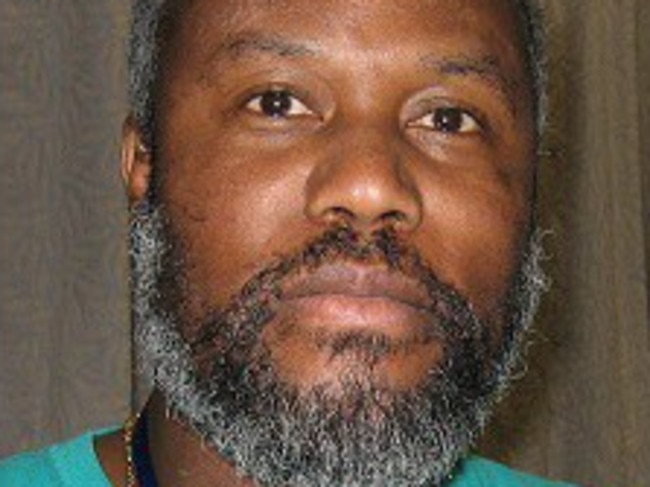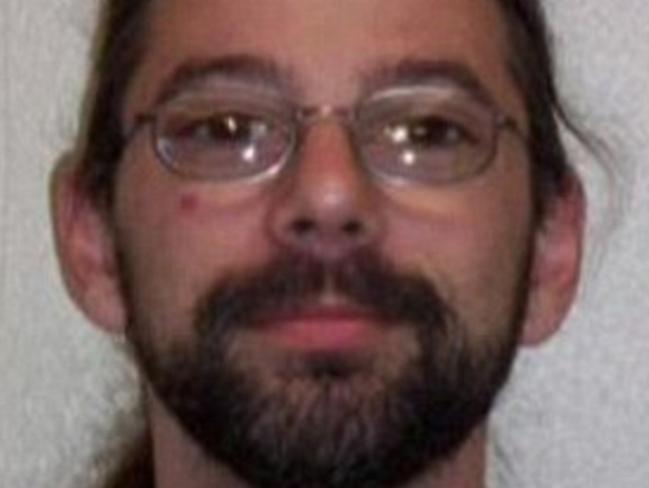These cases all have one thing in common — innocent men were jailed for crimes they didn’t commit
STEVEN Avery’s case has millions around the world shaking their heads in disbelief at his treatment. He’s not alone — these cases will make your blood boil.

QLD News
Don't miss out on the headlines from QLD News. Followed categories will be added to My News.
THE case of Steven Avery has captivated the world.
While millions of people are debating whether Avery — the subject of Netflix’s Making a Murderer — is guilty or innocent of murder, it has also shone a light on the at-times murky world of criminal justice, particularly in the United States.
According to The Innocence Project more than 300 people in that country have been cleared of crimes they were convicted for, mostly due to new or advanced DNA techniques proving without doubt they were wrongly jailed.
Some though are far more worrying, with injustices so severe it seems unfathomable that the individuals were committed to trial let alone convicted.
LESLY JEAN

The nightmare for Lesly Jean began in 1982 when the victim of a violent rape looked at an image of him and said it made her “feel sick”.
She couldn’t identify anyone but saw him in a line-up of suspects as looking “haunty”. She also couldn’t identify items of clothing that were seized by police from his locker.
Someone had broken into her Jacksonville, North Carolina, home about 3am on a July night in 1982 and repeatedly raped her.
Immediately after she gave police a description of the rapist, which closely matched that of a police officer who stopped a man nearby and questioned him — before the man managed to escape.
To help her remember more, the head of the crime squad, Delma Collins, decided to hypnotise her. Collins had completed a two-week course in hypnosis and believed it would help the victim remember her attacker.
Once she was hypnotised she began to lean towards Mr Jean as her attacker and after listening to a tape of him speaking, believed it was him.
The police officer, who believed he saw the suspect on a nearby road, was also hypnotised and changed his description of the man he saw. This new description was a closer description to that of Mr Jean.
During his trial, his defence lawyers only learned of the hypnosis — and the fact they were taped — as the trial was nearing an end.
In court, Mr Jean had four alibis, including three fellow Marines who were roommates of his and insisted he was in bed when the attack occurred.
Furthermore, his commanding officer said Mr Jean was on the base at the time of the crime. It wasn’t enough for the jury though and he was convicted of four counts of sexual assault and rape and sentenced to two consecutive life terms in prison.
In 1991 after a lengthy court battle, the US Court of Appeals reversed a finding that the failure to “timely disclose” the tapes of the hypnosis violated case law and the charges against Mr Jean were dismissed and he was released.
It would be nine more years though before DNA evidence proved he wasn’t the rapist and he was pardoned by the North Carolina Governor.
WILLIAM DILLON

William Dillon spent 27 years behind bars for a murder that DNA eventually proved that he didn’t commit. The victim, James Dvorak, was found naked and beaten in a forest near the beach along Florida’s east coast.
A hitchhiker wearing a bloody yellow T-shirt was picked up close to the scene and was picked up by a motorist, who left him at a pub. The motorist found the hitchhiker had left the bloodstained T-shirt in his truck and binned it — but after seeing media coverage of the murder called police who retrieved it.
Days later Dillon was questioned and apparently linked to the T-shirt by a supposed expert in handling scent-tracking dogs.
At the murder trial a former girlfriend said she saw Dillon standing over the body while wearing the T-shirt. The motorist also identified Dillon as the man he picked up, despite his initial description not fitting Dillon’s actual appearance.
To add to the prosecution case, a jailhouse snitch said Dillon confessed to him while he was in custody awaiting trial. The so-called confession was confused though and even though there were others around, no on else heard him say it.
He was jailed for life, ending any hopes of a baseball career. Until police came calling, he had come to the attention of the Detroit Tigers.
After Dillon was convicted, the snitch had rape charges against him dropped. Then the former girlfriend recanted her evidence — and she was later revealed to have been having a sexual relationship with the lead officer, who eventually quit.
The problems for the prosecution and police didn’t end there. Dillon tried several times to appeal his conviction, but each time it failed. Then in 2007, lawyers with the Innocence Project of Florida requested DNA testing. The results were staggering.
Tests on the yellow T-shirt revealed without shadow of a doubt that Dillon hadn’t worn it. The T-shirt had been a central part of the prosecution case.
There was more. Sweat and skin cells obtained from the T-shirt were proven not to have come from Mr Dvorak or Dillon.
At last, he was free. At the age of 49, Dillon was released from jail in November 2008 and the charges against him were formally removed the following month.
RANDOLPH ARLEDGE

The victim was brutalised. Carolyn Armstrong was 21, and she was naked from the waist down when her body was found.
Her neck and chest were covered with 40 stab wounds. In her abandoned car nearby, there were several pieces of evidence, including a black hairnet that had been left on the driver’s seat.
It would prove critical in getting Randolph Arledge free from jail in 2013. Advanced DNA testing linked someone else — not him — and the 58-year-old walked free from court and into the arms of his children, CBS reported.
“They suffered more than anybody,” Mr Arledge told media. Pointing to his daughter, Randa Machelle Arledge, he said: “She’s always talking about, she wanted me to come pick her up from school. Now she’s picking me up.”
They had only been aged four and seven when he was jailed in 1981. His sentence had been one of 99 years.
Incredibly, he was convicted entirely on eyewitness evidence. Two robbers with whom Mr Arledge was carrying out a robbery claimed he had admitted stabbing someone, and that he had blood on his clothes.
Eventually one of them admitted lying and the real killer was dead. But Mr Arledge had spent 29 years in jail for a crime he didn’t commit.
DONOVAN ALLEN

Donovan Allen, 34, is one of the more recent prisoners released into the community after being jailed for a crime that evidence now suggests he didn’t commit.
Just last month, he was freed after spending almost 16 years behind bars, accused of murdering his mother in 2000.
His conviction was achieved without any physical evidence. Instead, police and prosecutors used a false confession — after a 14-hour interrogation — and jailhouse snitches to convince a jury of his guilt.
He was wasting away in jail until DNA tests from the murder scene identified his cousin, Brian Kitts, 42. He was linked forensically to the gun used to bludgeon the victim, Sharon Cox, and also on the collar of a shirt she was wearing when she was strangled.
Allen was arrested in November on suspicion of first degree murder, the Seattle Times reported.
Not only did he lose his mother in the most brutal way imaginable, he also spent the majority of his adult life behind bars. He is prepared though to try and rebuild his life.
“I’m so relieved this part is over, I am looking forward to new beginnings,” he said after his release.
“He has taken everything away from me. I lost my mother, then I lost my freedom and my family — this has destroyed many lives,” he said in a statement provided by the Innocence Project Northwest.
Although the murder charge has been vacated, he has still been ordered to stand trial again. His supporters are hopeful of success though because — until now — there has been no suggestion a second person was involved, and DNA has excluded him.
KIRK BLOODSWORTH

For nine years, Kirk Bloodsworth was jailed for the most heinous crime.
He’d been convicted of sexually assaulting, strangling and beating a nine-year-old girl to death. At the time he was a Marine, and his neighbour called police after extensive publicity surrounding the little girl’s death.
That was enough for police who were under intense pressure to solve the crime.
There were some obvious problems with witnesses. Two were children who didn’t pick Mr Bloodsworth out of a line-up and prosecutors rejected five witnesses who testified that he was home at the time of the murder.
He was sentenced to death and was on death row when he was finally acquitted, becoming the first death row inmate found to be wrongly accused.
Eventually DNA testing revealed he was not the source of semen found in the girl’s underwear and he was released “in the interests of justice”. His mother died five months before he was released, reported the Baltimore Sun.
“I was accused of the most brutal murder in Maryland history,” Mr Bloodsworth told an audience in 2013. “It took the jury two and a half hours to send me to the gas chamber,” he told The New York Timesafter his release.
After his release, he was pardoned and was paid $300,000 in compensation and now campaigns against the death penalty.
DANNY BROWN

Danny Brown had been dating Bobbie Russell for several months before she was killed in her own home in Toledo, Ohio
She was raped and the murdered while her six-year-old son and two-year-old daughter were in the apartment.
When she was found by police she had an extension cord wrapped around her neck.
Mr Brown’s conviction was largely due to the six-year-old’s account of the night of the murder.
He claimed to have seen Danny in the apartment that night arguing with his mother. The scared boy hid under his bed after hearing a loud noise and seeing a man, who he thought was Danny, climb out of the apartment through a window.
Mr Brown had several alibis for that night but the jury were convinced by the boy’s account, even though he was young and clearly traumatised.
In 2001, Mr Brown was released from jail after serving 18 years for aggravated murder. DNA testing implicated another man, Sherman Preston, who was serving time for a similar crime, and excluded Mr Brown.
Despite being freed, prosecutors have blocked him from receiving a payout for being wrongly jailed. They argue the DNA tests only prove that he was not guilty of the rape, and don’t prove he wasn’t guilty of murder.
The possibility two men were involved was rejected at trial. The possibility Mr Brown was somehow involved is complicated by the fact he and Sherman Preston had never met.
Since his release, he has spent his life trying to prove his innocence. He told Vocativ he wouldn’t give up: “I can’t let it go. They ruined my life, and they’re still trying to.”
Originally published as These cases all have one thing in common — innocent men were jailed for crimes they didn’t commit



